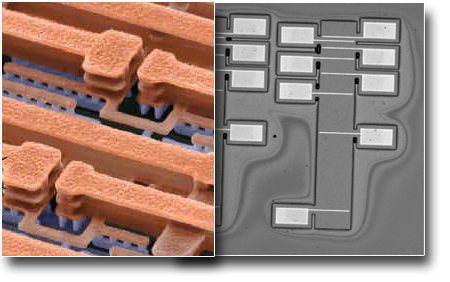The metallization technique is usually aimed at (but not limited to) the fabrication of electrical contacts of prototypes and devices for extracting the produced signals. Usually metals are deposited with a thickness ranging from few monolayers to few µm, depending on the specific application. ISM proposes three techniques for metallization: magnetron sputtering, electron-beam evaporation, and pulsed laser deposition, all located in the DiaTHEMA Lab of Montelibretti Section.
In the magnetron sputtering, ionized particles due to the activation of a plasma of an inert gas (e.g. Ar) are forced to impact onto a target (the material to be deposited) causing the ejection of atoms and/or molecular clusters, that later condense on the substrate surface for the metal coating formation. This setup is generally used in the deposition of films with thickness > 20 nm. Derived from a commercial unit (Leybold LH Z400), the available system is dedicated to the deposition of materials up to 4-inch size.
The electron beam evaporation is a physical vapor deposition in which high-energy electrons impinge on the material to be deposited, typically in the form of rods or pellets, inducing its sublimation and the following deposition on a substrate. Inside the vacuum chamber, the metal is placed in a pocket crucible where it is easily irradiated by the electron beam. The system employs a multi-crucible system that allows the deposition of multilayers. To improve the homogeneity of deposition, the substrates are mounted on a rotating holder whose speed can be controlled by the operator.
The pulsed laser deposition is based on the vaporization from a target due to the interaction with a high-power laser beam. The evaporated material gives shape to a dense cloud of ionized species, of different nature, known as plume. The plume, formed by atoms, ions, particles and small atomic aggregates (i.e. clusters), has its origin on the surface of the target irradiated by the laser and condenses on the surface of the deposition substrate. The available laser source is the Lambda COMPex 102, capable of producing a pulsed beam (with a single pulse duration equal to 30 ns) operating in Q-switching mode and with a wavelength of 193 nm.


 English (UK)
English (UK)  Italiano (Italia)
Italiano (Italia)